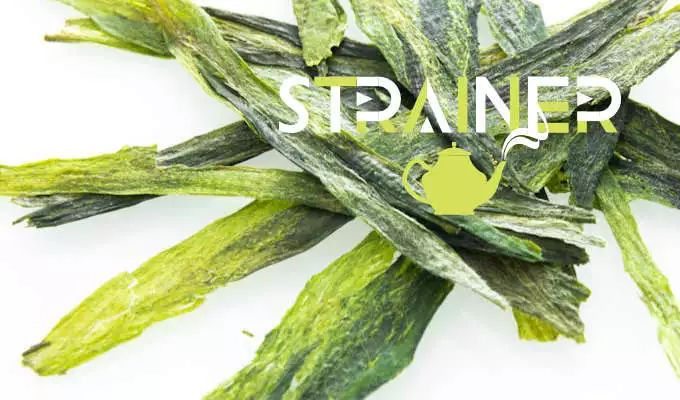In last month’s Strainer, I wrote to you from Wales.
Well, I’m back from Wales.
But I’m not quite done with the Welsh theme yet. That’s because, you see, this is the month of St. David’s Day; 1 March, precisely.
When St. David’s Day comes around, children in Wales hold a talent show called an Eisteddfod. And every child has to dress themselves as Welsh for the day.
In most cases, that means wearing either a daffodil or a leek in the pocket of a blazer. Sometimes it’s just a daffodil, or a leek-shaped lapel badge.
A leek, by the way, is like a giant spring onion, an upscale scallion. China (north, especially) has similar long green onions, but a leek is wetter, and muddier throughout, like Wales.
- Sugar-Free Bottled Tea; China’s Wu Tang Clan
- Which Tea Brand Best Compliments Your Private Jet?
- Long Time, Long Jing No See
“So what’s this got to do with tea?”, you ask.
It’s because the tea leaves I’m drinking this morning look almost exactly like leeks. They’re called Taiping Houkui (太平猴魁), translatable as “Peaceful Monkey Leader”.
Like a leek, there’s that gradation from dark green at the tip to almost white at the root. These green tea “leaves” are not the tiny buds we’re used to; they are a cluster, long enough to span the palm of your hand. Picked in late April, they’re also wider than, say, Anji baicha (安吉白茶).
And did I mention that they’re beautiful? These leaves are almost transparent, so much thinner than any other flattened green tea, thinner than the page you’re reading this on, or the screen of your new Huawei phone. Green, brittle, radiant stained glass.
Houkui has two different monkey-themed legends explaining its name. The production process involves many, many stages. It has a reputation as one of the green tea greats. And this batch seems to be a good one. It ought to be amazing.
- Apocalypse Tea; Should I Drive After Drinking This?
- Perfect Median; China’s Take on Earl Grey
- Swallowing is Just the Beginning; Rain, Flower, Cloud!
But this is my third encounter. And I’m not yet smitten.
It certainly lives up to the mildness which houkui fans boast about. But is that really such a virtue? There’s clear benefit in a mild medicine or a mild winter. But a mild luxury is like a mild orgasm; what’s the point of that?
This tea requires a huge number of leaves in the cup, and gives little beyond the third infusion.
There’s none of that soapiness which real leeks and spring onions lean towards, nor the grassiness of the most polarising green teas. But what’s left?
Some of the biscuity aroma in the fresh leaves translates into the infused drink. The experience on the tongue is mildly pleasant. But the reputed “floral” qualities are as absent here as they were in my previous two encounters. (For my first tasting of taiping houkui, I remember blaming my morning toothpaste for the lack of wow. The second was at home, and I blamed the “quality”, seemingly pressed with the same mould as strips of dried toufu.)
So I’m searching for tastes and comparisons. But the aroma comparison I’m thinking of is farms and pigs manure, from my childhood. The mildest hint.
Now, this has been a pretty iconoclastic takedown of a landmark tea. Later, I will feel doubtful of my judgment, as well as feeling (very) ungrateful.
But that pigs manure comparison should not be read as the most damning insult here.
I love those Welsh farms. They really smell of something.









